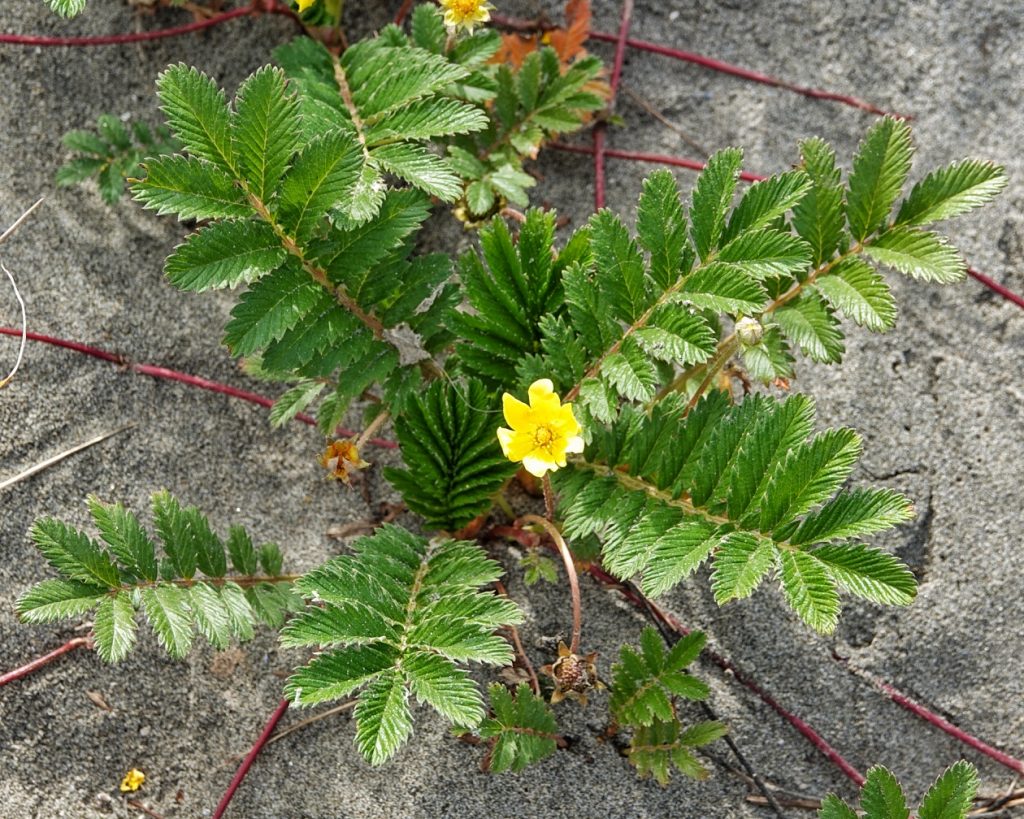
I don’t usually post a subspecies as a profile, but the genus Potentilla is in flux. Pacific silverweed was a full species in a different genus, Argentina egedii, for awhile, and may be granted full species status again, and the whole Potentilla anserina complex may end up in Argentina, if the molecular biologists have their way.
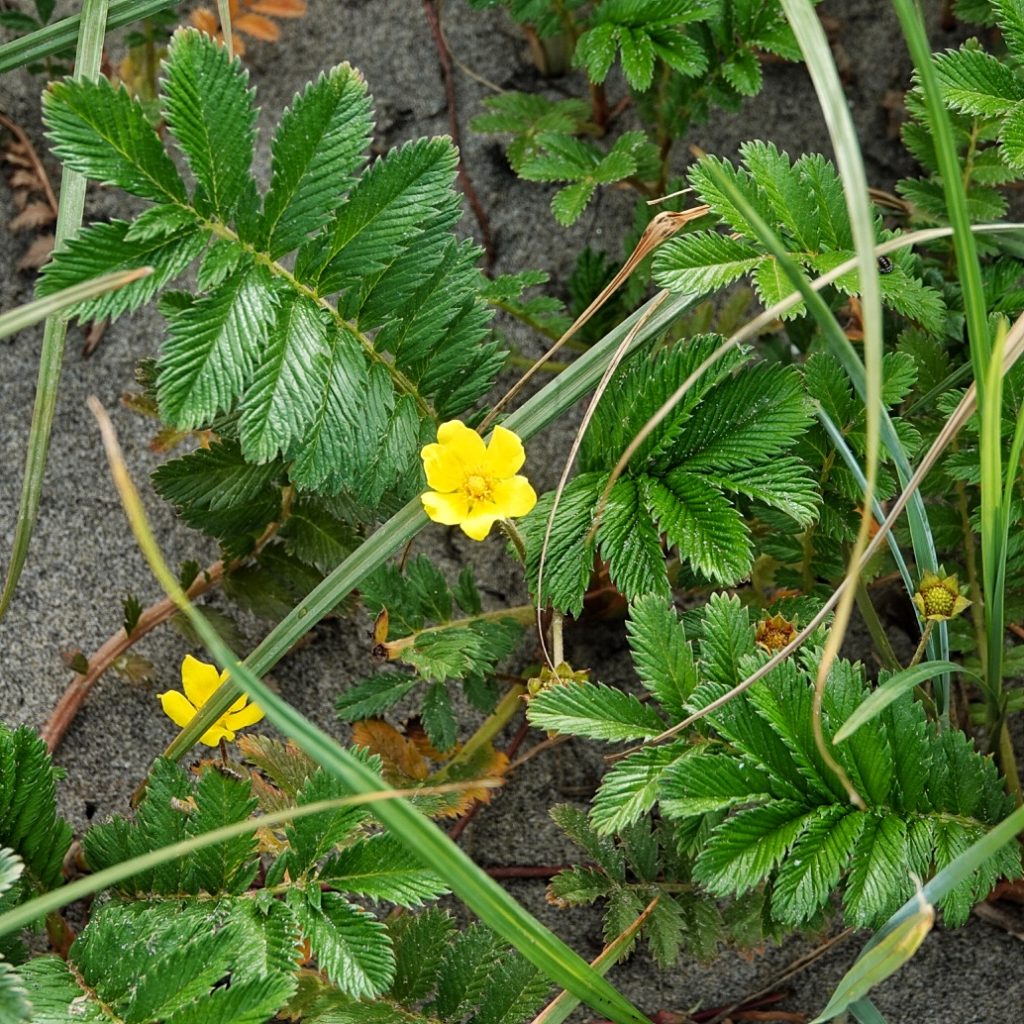
The reason that I, as a non-botanist, think of it as a separate species is that it is only found very near to the coast, whereas the other subspecies in our area, Potentilla anserina ssp. anserina, is found in the seasonally wet areas of much drier interior locations. I did find some of this at the Rupp’s, along Willapa Bay, but all of these photos came from the large amounts of it I found at Cape Disappointment SP.
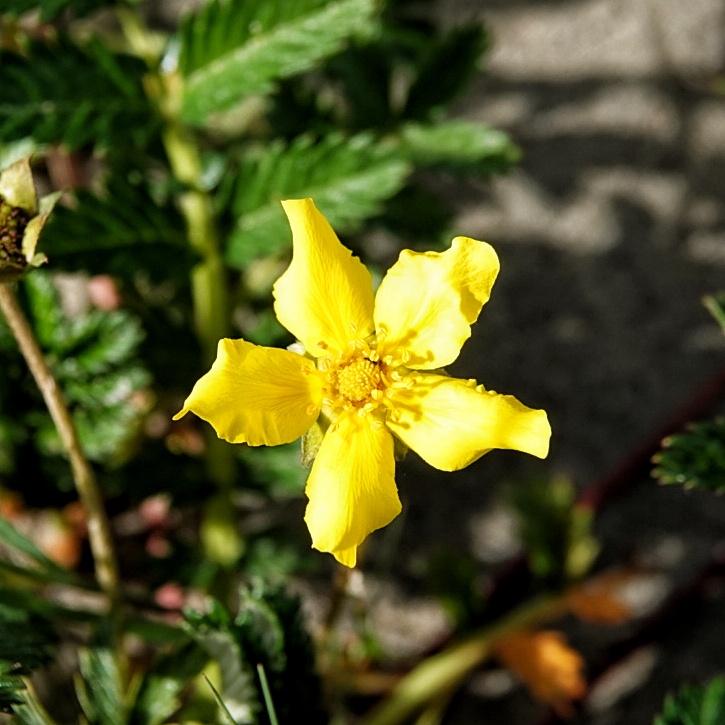
I cannot determine which subspecies they may be talking about with most of the literature on edibility, but I think it’s safe to assume that all subspecies have similar edibility. All parts of this plant are considered to be edible, though there are reports of stomach irritation, and it does contain tannic acid, which can be problematic for some people, though it doesn’t contain as much tannic acid per ounce as black tea.
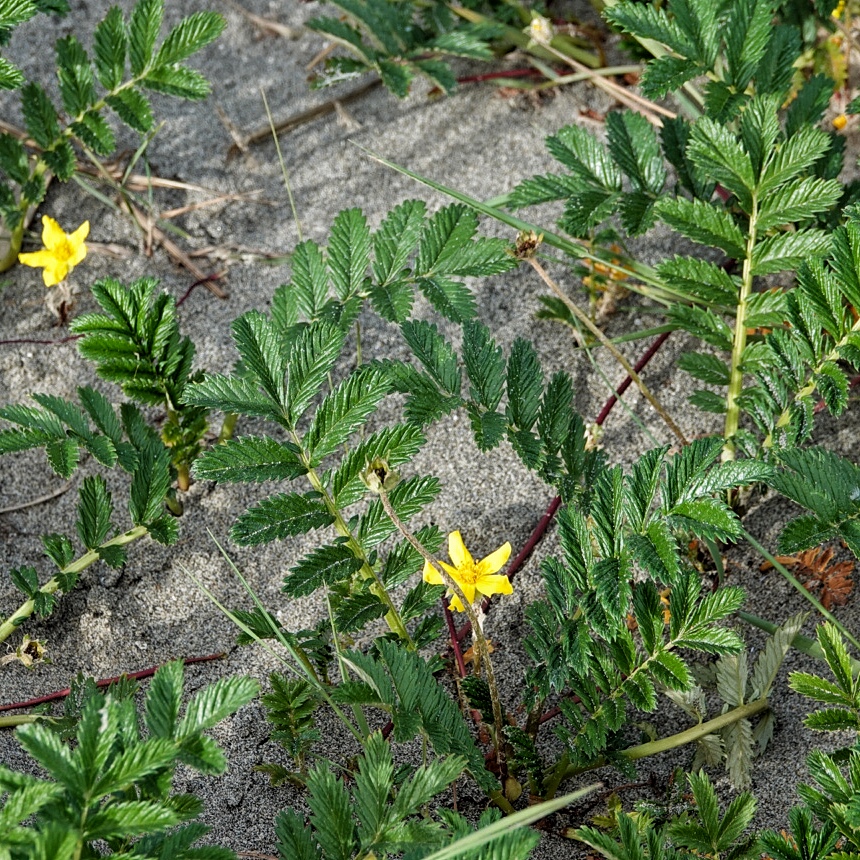
It is high in vitamin C and other minerals. Indigenous peoples ate the roots both raw and roasted or steamed. It was important enough as a food source that tribes were territorial about their patches, and the stolons were particularly prized. Boiled roots were used as a poultice, and as a purgative, and juice from the roots was applied to sore eyes.
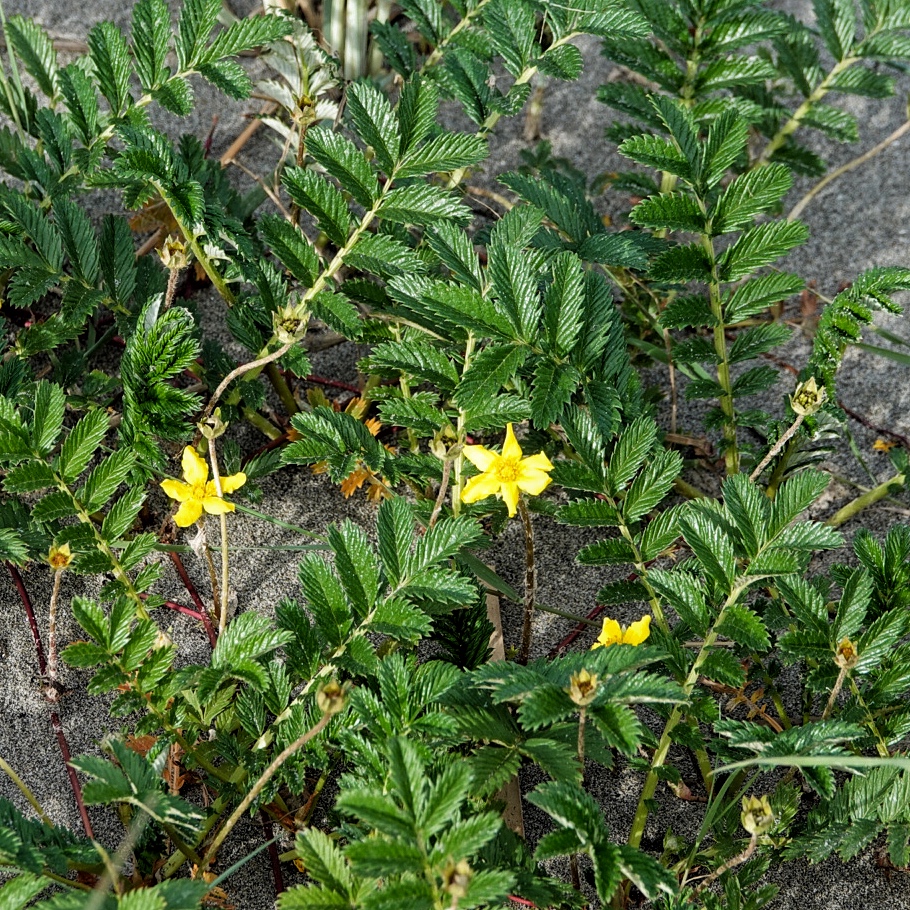
And beyond all of that it is just very aesthetically pleasing to see. The dark green, toothed leaves are very striking against the sand that is their usual substrate, and the yellow flowers really ‘pop’ against the green and grey. For me, seeing Pacific Silverweed is as integral of a part of the ‘beach experience’ as waves, pelicans, bonsai’d spruce on the headlands, or even the tang of salt air.
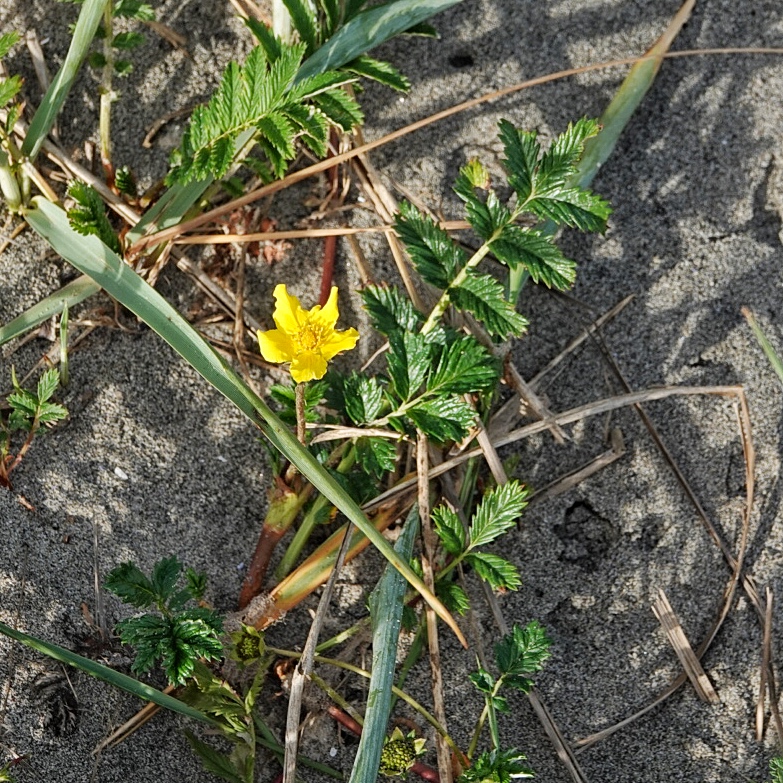
Description-Creeping mats which spread by stolons; basal leaves pinnate, suberect to erect, up to 15” long; leaflets toothed, distinctly veined, with silvery hairs on the underside, and hairless petioles; flower single, arising from the center of the florette, yellow, with large, green sepals that are longer than the calyx.
Similar species–P. a. anserina has upper calyx longer than or equal to sepals, and is found inland; other Potentilla have basal leaves in groups of three (ternate), or basal leaves palmate, or lack stolons.
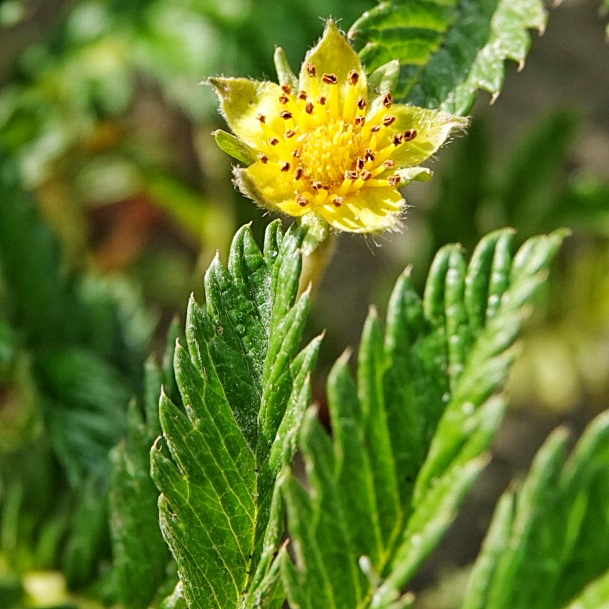
Habitat-Salt marsh, estuaries, and dunes along the coast
Range-Pacific Coast from California to Alaska, northern Atlantic Coast; found only very near to the coast in our region.
Reproductive timing-Blooms April to August
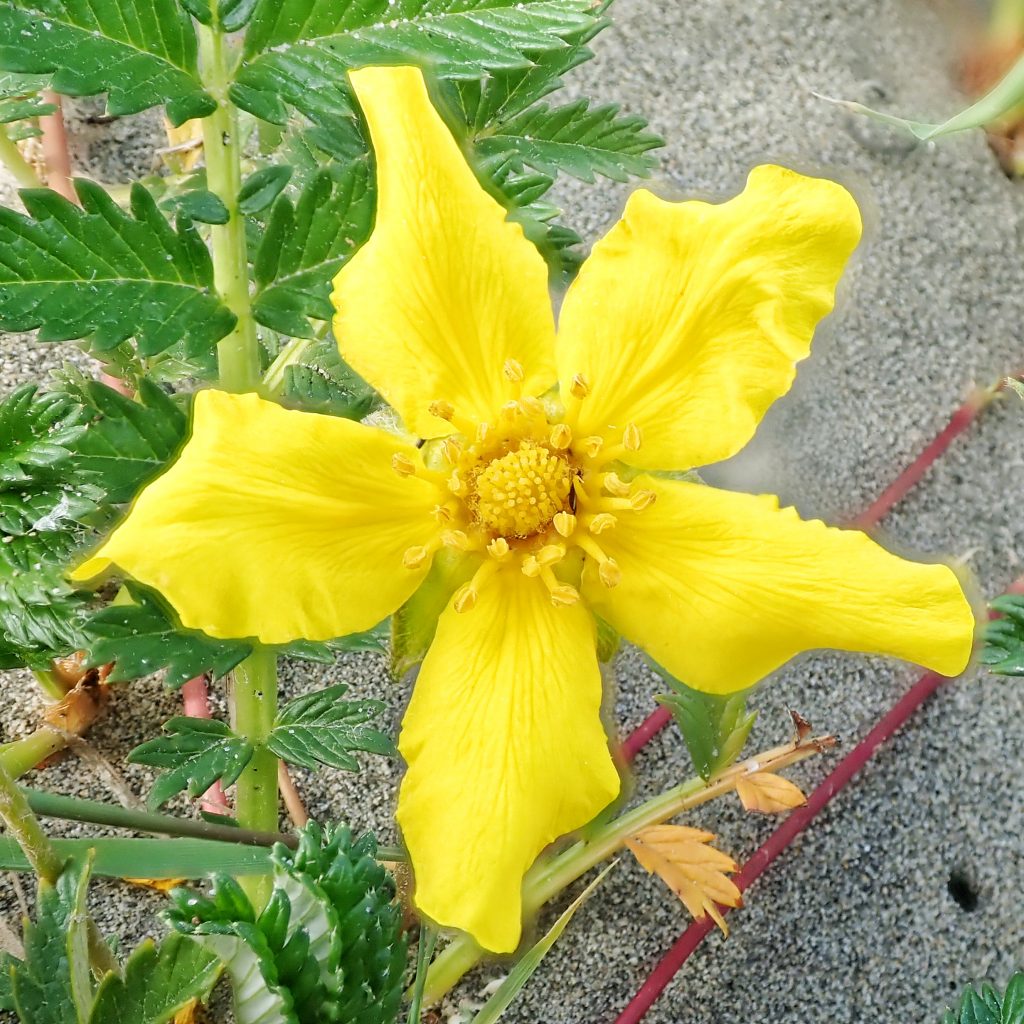
Eaten by-This plant is utilized as a larval host by the moths Hesperumia sulphuraria, Synanthedon bibionipennis, and Anacampsis fragariella amongst others; the flea beetle Altica brownii uses this plant as a primary larval host, and A. subplicata larvae switch to it when the willows it prefers begin to decline; various bees and flies feed from its pollen and nectar; deer and other hooved mammals browse it, and the seeds remain undigested as they pass through their system, helping with dispersal.
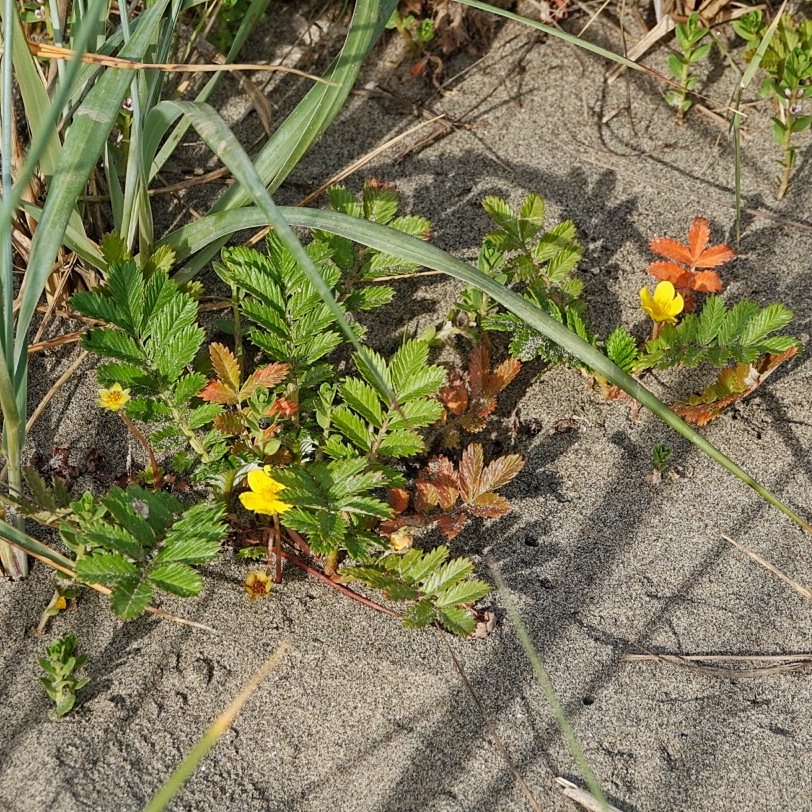
Etymology of names– Potentilla is apparently a combination of the word tormentilla, which is the common name of a common Eurasian cinquefoil, and the Latin word for power. A stylized version of the flower, called a cinquefoil, was common in medieval heraldry, and signified military power. It appears that the French used the word ‘potentille’ as a common name for tansy, a related group of species. The specific epithet anserina means ‘of the goose’ in Latin. Whether this refers to it being good goose forage, or refers to the leaves looking like goose feet is unclear. The species complex is cosmopolitan, and in Sweden it is called ‘goose-wort’.
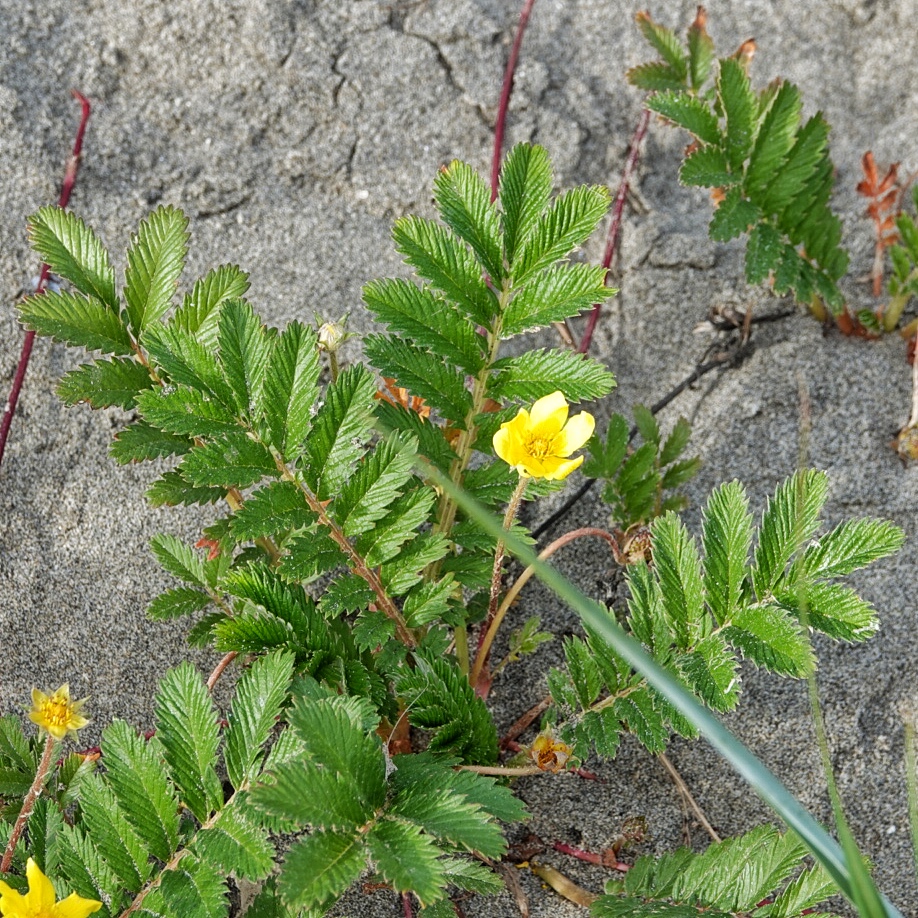
https://www.ediblewildfood.com/silverweed.aspx
https://eflora.neocities.org/Potentilla%20anserina.html
https://calscape.org/Potentilla-anserina-ssp.-pacifica-(Pacific-Potentilla)?srchcr=sc5819b477e8576
http://www.efloras.org/florataxon.aspx?flora_id=1&taxon_id=250100494
https://www.wnps.org/native-plant-directory/204-potentilla-anserina
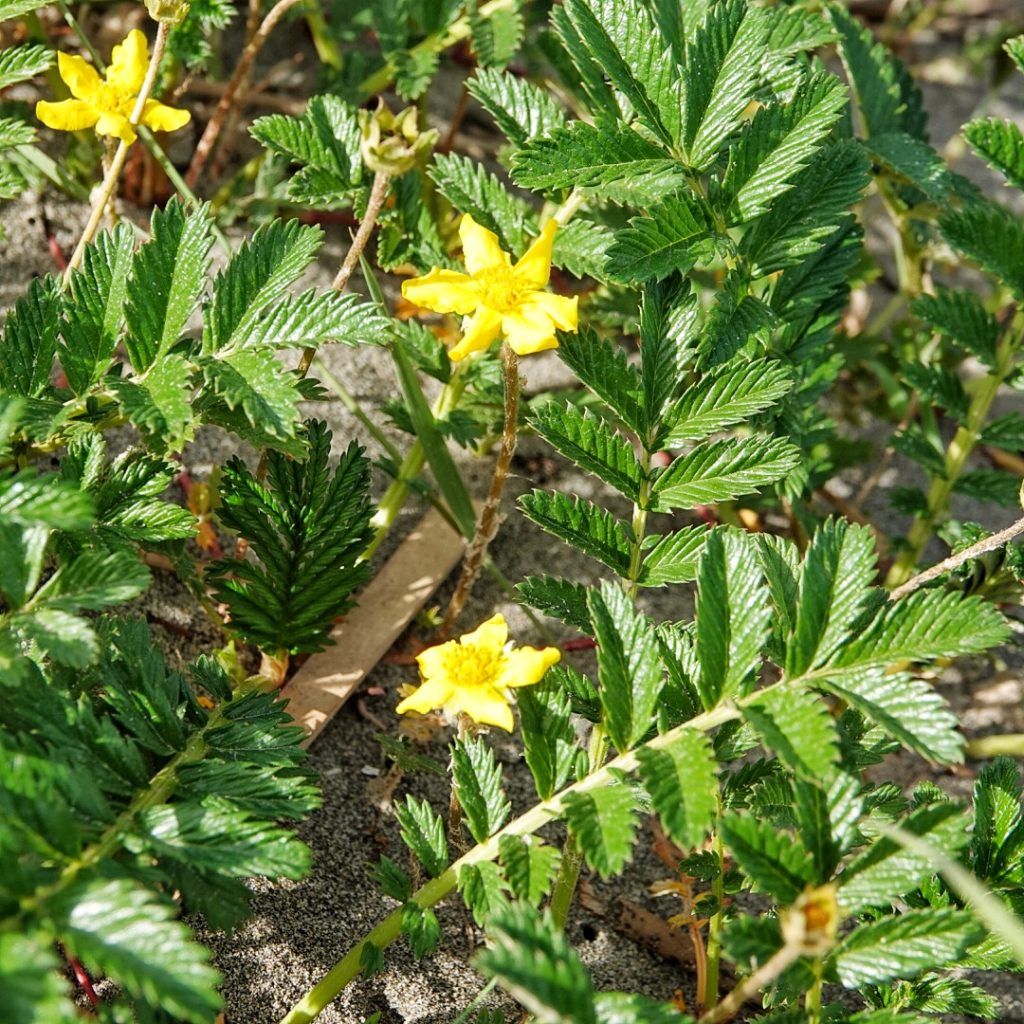
Very good profile of this beach beauty! Thank you ☺️
Thank you for the article. Delighted as always
Thanks!
I was posting a local silverweed photo on I Naturalist and currently they list the Genus for both as Argentina!
Also The Burke Herbarium at UW says both are found West of Cascades, but oacifica is not found East of Cascades